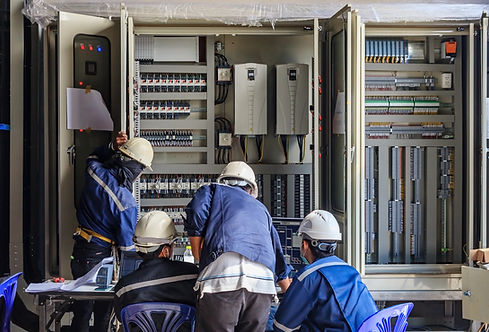CardiAngel
in Wind Farms & Turbine Maintenance Sites
Sudden cardiac arrest (SCA) can strike anyone, anywhere, including isolated wind farms where access to emergency services is delayed. For turbine technicians working under physically intense and hazardous conditions, having an automated external defibrillator (AED) on-site is not just a precaution, it’s a life-saving necessity. A well-placed AED can make the difference between life and death in minutes, making it a vital part of every wind energy site's safety infrastructure.

Why AEDs Are Essential in Wind Farms & Turbine Maintenance Sites?
-
Remote Locations with Delayed Emergency Access: Wind farms are often located far from hospitals, making immediate first response crucial in cardiac emergencies.
-
High-Risk Working Conditions: Workers perform physically demanding tasks at heights and in isolated environments, increasing cardiac stress.
-
Extreme Weather Exposure: Turbine technicians are frequently exposed to wind, cold, or heat — all of which can exacerbate cardiac risk.
-
Limited On-Site Medical Personnel: Most wind farms operate with minimal staff, often without trained medical teams on location.
-
Climbing Fatigue and Electrical Hazards: The combination of altitude, physical exertion, and electrical equipment increases the chance of life-threatening events. 100 mA of alternating current is enough to trigger a dangerous arrhythmia or cardiac arrest.
Why CardiAngel Is Ideal for Wind Energy Environments?
-
IP55 Rating – Dust and Water Resistant: Ruggedized for harsh outdoor use — perfect for dusty turbine areas and humid or wet conditions.
-
Compact & Lightweight Design: Easily carried by technicians during climbs or between turbines with minimal bulk.
-
Long Battery Life & Self-Check System: Reliable operation even after long periods without maintenance; daily self-tests ensure readiness.
-
Fast Shock Delivery: Critical for remote sites where seconds can save lives in the absence of professional responders.
-
Clear Voice Prompts in 3 Languages: Intuitive use for multinational teams working across borders and languages.
-
Mountable Storage Options for Outdoor & Indoor Units: Designed to be fixed in vehicles, control rooms, or turbine base stations for quick access.

Where to Place CardiAngel AEDs?
-
Turbine Towers: Inside base cabinets or storage compartments, technician rest platforms or interior compartments, external service boxes mounted at entry points.
-
Maintenance Vehicles & Crew Trucks: Glove compartments, tool storage areas, or side door access.
-
Operations & Control Centers: Reception desks, common areas, or near first-aid stations.
-
Remote Monitoring Stations or Containers: Next to power supplies or communications equipment.
-
Training & Break Facilities: Locker rooms, dining areas, and safety briefing rooms.
